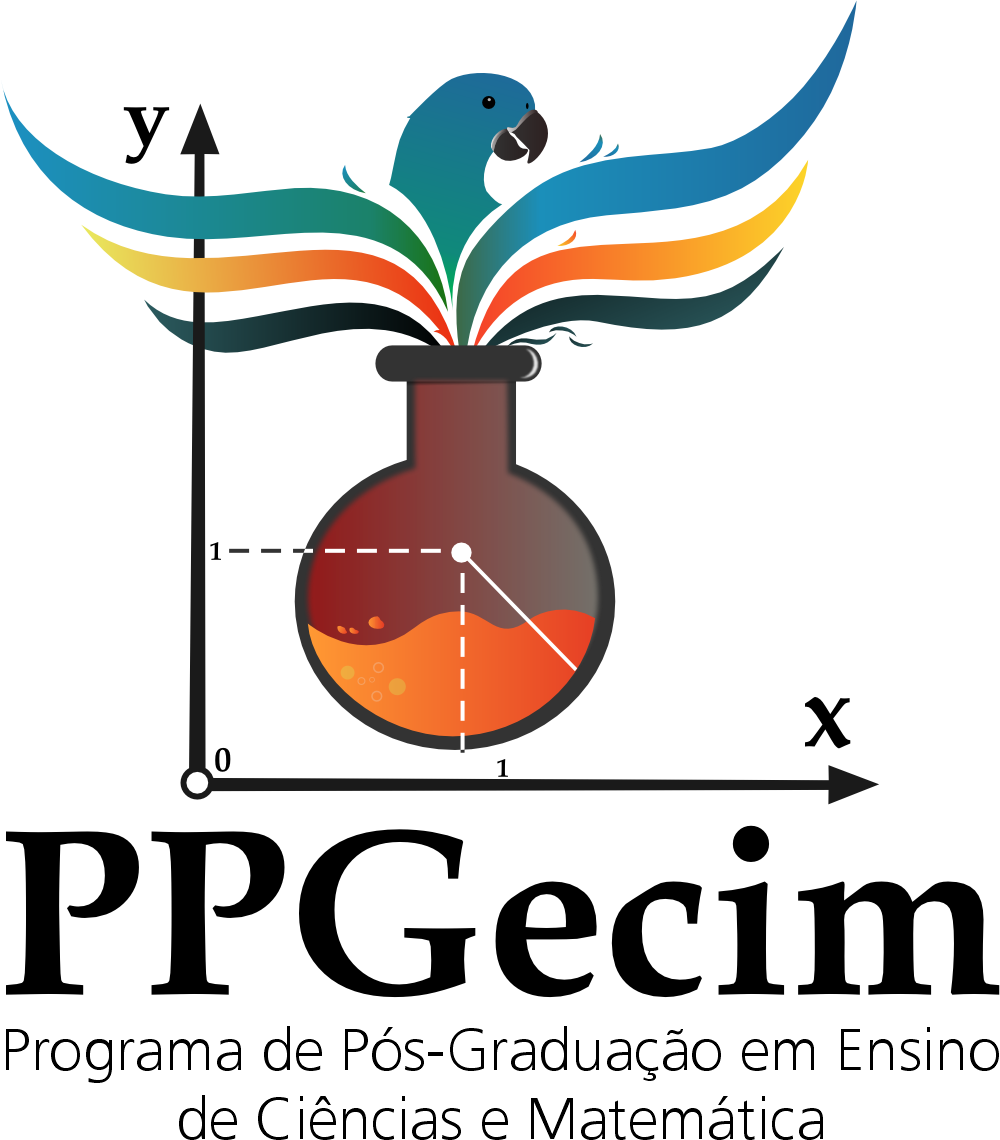ETNOMODELLING IN THE CLASSROOMS THROUGH THE FREEDOM QUILTS
DOI:
https://doi.org/10.20873/riecim.v1i2.12275Keywords:
Etic Approach, Ethnomodelling, Freedom QuiltsAbstract
The mathematical practices of members of different cultural groups can be translated and understood through the study of Ethnomodelling. The understanding of emic, etic, and dialogical approaches is essential for a coherent translation of local mathematical practices developed by group members. Ethnomodels can be a valuable tool in the appreciation, explanation and understanding of mathematical knowledge brought by different cultural groups. This article seeks to exemplify and theorize the practice of ethnomodelling in the classroom, demonstrating that it is possible to use mathematics in different creative ways by using African cultural artifacts called Freedom Quilts, demonstrating one of the mathematical properties present in the Shoo Fly Quilt.
References
BURNS, E.; BOUCHARD, S. Underground railroad: sampler. San Marcos, CA: Quilt in a
Day Inc., 2003.
CORTES, D. P. O. Re-significando os conceitos de função: um estudo misto para entender
as contribuições da abordagem dialógica da etnomodelagem. Dissertação de Mestrado
Profissional em Educação Matemática. Departamento do Educação Matemática (DEEMA).
Instituto de Ciências Exatas e Biológicas (ICEB). Departamento de Educação MatemáticaDEEMA. Ouro Preto, MG: UFOP, 2017.
D’AMBROSIO, U. Etnomatemática. São Paulo, SP: Editora Ática, 2017.
D’AMBROSIO, U. Prefácio. In: ROSA, M.; OREY, D. C. (Eds.). Etnomodelagem: a arte de
traduzir práticas matemáticas locais. São Paulo, SP: Livraria Editora da Física.
EGLASH, R. African Fractals: modern computing and indigenous design. New Brunswick,
NJ: Rutgers University Press, 1999.
FREIRE, P. Pedagogia da autonomia: saberes necessários à prática educativa. São Paulo, SP:
Paz e Terra, 1996.
OREY, D. C. The ethnomathematics of Sioux tipi and cone. In: SELIN, H. (Ed.). Mathematics
across cultures: the history of non-western mathematics. Norwell, Netherlands: Kluwer
Academic Publishers, 2000. pp. 239-253.
OREY, D. C. ROSA, M. Explorando a abordagem dialógica da etnomodelagem: traduzindo
conhecimentos matemáticos local e global em uma perspectiva sociocultural. Revista
Latinoamericana de Etnomatemática, v. 11, n. 1, p. 179-210, 2018.
ROSA, M; OREY, D.C. Abordagens atuais do programa etnomatemática: delineando-se um
caminho para a ação pedagógica. Bolema, v.19, n. 26, p. 19-48, 2006.
ROSA, M; OREY, D.C. Symmetrical freedom quilts: the ethnomathematics of ways of
commuinication, liberation, and art. Revista Latinoamericana de Etnomatemática, v. 2. n. 2,
p. 36-59. Agosto, 2009.
ROSA, M. ; OREY, D. C. Ethnomodeling: na ethnomathematical holistic tool. Academic
Exchange Quarterly, v. 3, n. 3, p. 14-23, 2010.
ROSA, M.; OREY, D. C. O campo de pesquisa em etnomodelagem: as abordagens êmica, ética
e dialética. Educação e Pesquisa, v. 38, n. 4, p. 865-879, 2012.
ROSA, M; OREY, D. C. Ethnomodelling as a research lens on ethnomathematics and
modelling. In: STILLMAN, G. A.; BROWN, J. (Orgs.). Teaching mathematical modelling:
connecting to research and practice. International Perspectives on the Teaching and Learning
of Mathematical Modelling. Dordrecht, The Netherlands: Springer Science+Business Media
Dordrecht, 2013. pp. 117-127.
ROSA, M; OREY, D. C. Etnomodelagem: a arte de traduzir práticas matemática locais. São
Paulo: Editora Livraria da Física, 2017a.
ROSA, M.; OREY, D. C. Posicionalidade em pesquisas em etnomatemática: discutindo os
movimentos de ir e vir entre o campo e a academia. Revista Latinoamericana de
Etnomatemática, v. 10, n. 3, p. 233-255, 2017b.
ROSA, M; OREY, D. C. Etnomatemática: investigações em etnomodelagem. Revista de
Investigação e Divulgação em Educação Matemática, v. 2, n. 1, p. 111-136, 2018.
ROSA, M; OREY, D. C. Etnomodelagem como um movimento de globalização nos contextos
da etnomatemática e da modelagem. Com a Palavra o Professor, v. 5, n. 11, p. 258-283 2020.
SHOCKEY, T.; MITCHELL,J. B. An ethnomodel of a traditional Penobscot summer dwelling.
RIPEM, v. 6, n. 1, p. 178-195, 2016.
TOBIN, J. L.; DOBARD, R. G. Hidden in plain view: the secret story of quilts and the
underground railroad. New York, NY: Doubleday, 1999.
WILSON, S. S. The secret quilt code. Traditional Quiltworks, v. 79, n. 1, p. 6-9, 2002.
Downloads
Published
How to Cite
Issue
Section
License
Copyright (c) 2021 Tatiana de Andrade Aguilar Delfiol, Milton Rosa

This work is licensed under a Creative Commons Attribution-NonCommercial 4.0 International License.
Copyright Policy
Copyrights are retained by the authors, who grant RIEcim the exclusive rights for first publication. Authors will not be remunerated for the publication of their work in this journal. Authors are permitted to enter into separate, additional contractual arrangements for the non-exclusive distribution of the work's published version in this journal (e.g., post it to an institutional repository, on a personal website, publish a translation, or as a book chapter), with acknowledgement of authorship and initial publication in this journal. The Journal's editors have the right to make textual adjustments and adaptations to conform to publication standards.
Open Access Policy
This journal provides immediate open access to its content, following the principle that freely providing scientific knowledge to the public contributes to the global democratization of knowledge. Users can read, download, copy, distribute, print, search, or use the content for any legal purpose, respecting national copyright laws and without seeking prior permission from the publisher or the author. The opinions presented in the articles are the responsibility of the authors. The Journal does not charge Article Processing Charges (APCs).
Licensing Policy - Usage License
Licensed under the Creative Commons Attribution-NonCommercial 4.0 International (CC BY-NC 4.0) License. This license allows sharing, copying, redistributing the manuscripts published in RIEcim in any medium or format. Additionally, it allows adapting, remixing, transforming, and building upon the material, as long as proper credit is given to the author and initial publication in this journal is acknowledged.


























